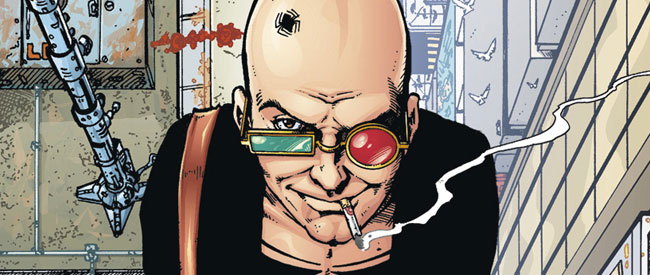
Next week, Black Mask Studios will release Ballistic, a psychedelic sci-fi adventure from Adam Mortimer and Darick Robertson. This series is a return to basics for Robertson as the artist gets back to drawing the kind of sci-fi stories that he started his career with.
To someone only familiar with the highlights of Darick Robertson’s career, it may come as a surprise to find that his first published work didn’t even star a human. It starred a beaver. A space beaver at that.
One of the defining traits of Robertson’s art style throughout his lengthy career has been the way he can pencil a human face to life. His characters “act” in a way that few other artists can replicate. Both in his more grounded stories and his sci-fi romps, his characters emote and express in a way that makes the storytelling that much easier for his writer.
That ability to give humanity to his drawings would seem to fly in the face of the idea of the artist drawing animals in leading roles. Quite the opposite is true, in fact. It is that ability to draw expressive facial features that has made Robertson such a successful animal artist throughout his career. His animals seem to be some of the most memorable aspects of his work, whether it was the initial anthropomorphic beaver, Stomponato (the vicious talking bulldog from Transmetropolitan), or, more recently, Happy!’s blue, winged unicorn. The cartooning of these animals leavens the darkest of his works, even when it concerns an animal as dark as Stomponato or as violent as Space Beaver.
Space Beaver was the series that would launch Robertson’s career. Just a year after finishing up high school, Robertson found himself with his first published work as he both wrote and drew his title character’s adventures. Ten Buck Comics released Space Beaver in 1986.
The series would last only 11 issues, but the cache he got from doing that book and a few others along the way – perhaps most notably, drawing the four issue mini-series Apache Dick, which took place in the popular Trouble With Girls universe from Malibu Comics – earned him work from the Big Two.
Robertson’s first shot at the mainstream came with Justice League Quarterly #4 which led to a brief stint on Justice League Europe, an all-but-forgotten Justice League mini-series in collaboration with Mark Waid called Justice League: Midsummer Nightmare (notable for essentially debuting the Justice League roster from Grant Morrison’s influential run), and a 25-issue run on New Warriors when he stepped in for Mark Bagley.
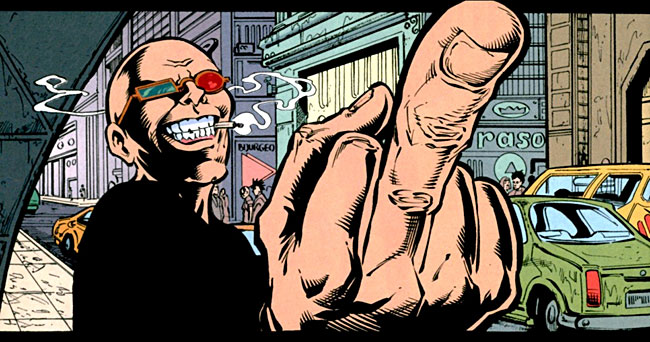
In 1997, after spending a majority of the decade working on superhero fare, Robertson partnered with Warren Ellis to deliver the critically-acclaimed Vertigo series Transmetropolitan. This series marked a majoring turning point in the artist’s career. It was nominated for multiple Eisner awards and was a hit with comic readers. Many of Robertson’s fans still consider it his best work, and it was the first of his works to be lauded industry-wide.
What made his work on the series so unique was his brilliant imagination that emanated from every panel. In retrospect, the art in balanced the transitional state from the superhero drawing of his early career to the darker realism of much of his later, Garth Ennis collaboration days in the 2000s. Transmetropolitan felt like a symbiotic gelling of Warren Ellis and Darick Robertson as the two told a story that felt, at times, like the ID of their consciousness had been set to run free. The characters Ellis wrote were brash and unpredictable; the world Robertson drew reflected that in its own unpredictability.
Towards the end of the run on Transmetropolitan, Robertson made his return to Marvel, drawing a tale for the publisher’s new imprint line, Marvel MAX. The return was notable as Robertson made his first of many future collaborations with Garth Ennis as the two made the 2001 six-issue mini-series Fury. The book, focusing on the MAX version of Nick Fury, garnered more praise for the artist and spawned a sequel in 2006, Fury: Peacekeeper.
Robertson and Ennis continued to work together on various Marvel MAX comics after Transmetropolitan wrapped up at the end of 2002 with issue 60. Robertson did a three issue stint on Ennis’ Punisher run when it was still under the Marvel Knights imprint and then later launched the MAX Punisher origin series Born in 2003.
These early 2000s works with Garth Ennis helped form the style that many fans of the artist are most familiar with today. This style was darker, and less exaggerated than his sci-fi work. And it was really violent. That violence became another defining trait of his work as the worlds that he created more closely resembled the real-world.
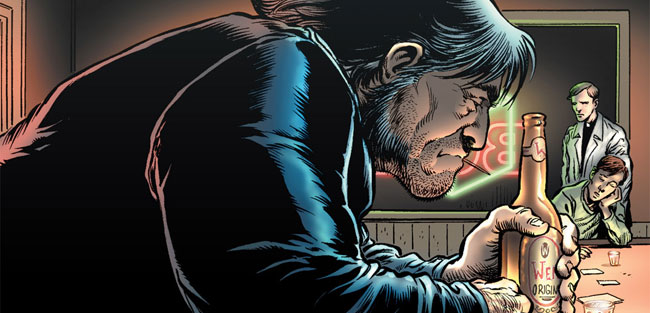
The amount of violence displayed on his MAX projects couldn’t be upheld in his regular Marvel Universe work, but that didn’t stop Robertson from perfectly complementing Greg Rucka’s gritty take on Wolverine for the character’s title reboot in 2003. It was a book in which Logan never donned his costume. He fought crime on a street level. Rather than tussling with the likes of Magneto he took down criminals.
The violence in the book served to act as a lesson. The two creators explored the cost of death and what it means for Wolverine to kill, exemplified by Wolverine #6 when Wolverine has a talk with his good buddy Nightcrawler, a character Roberson would get to know very well when he teamed with writer Roberto Aguirre-Sacasa on the short-lived 2004 Nightcrawler ongoing.
The second arc the creators worked on together wasn’t quite as successful as it had Wolverine facing off against his longtime nemesis, Sabretooth. But the writer and artist were again able to keep a lot of that grounded focus on the character even while facing a supervillain.
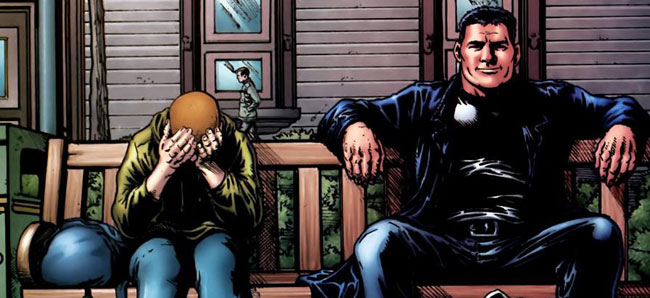
The violence would boil back to the surface in a big way for Robertson’s art in 2006 when he returned to working with Ennis as the pair launched The Boys for WildStorm. The book was about the corruption of superheroes and The Boys who kept on an eye on them. The creators were unflinching in their depictions of sex and violence.
The book was canceled by WildStorm after only six issues, but once the rights reverted back to Ennis and Robertson, the book was quickly revived at Dynamite Entertainment.
Robertson remained the ongoing artist until he left with issue #43.
Robertson’s most recent published work was the 2012 four-issue series Happy! which was written by Grant Morrison. The tale of a hit man who is recruited by an imaginary blue, winged unicorn seems like the perfect culmination of his career so far. The art is gritty and violent like so much of his work in the 2000s. The faces are expressive and real. And then he gets to draw a talking animal on top of it all.
Just like Space Beaver almost 20 years ago.
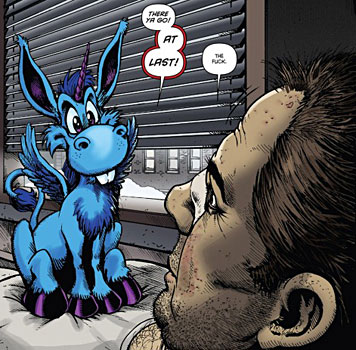
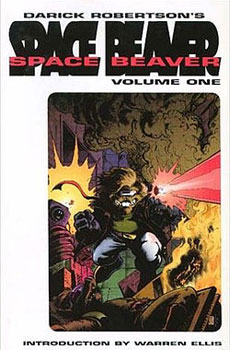





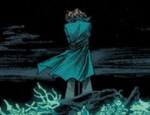
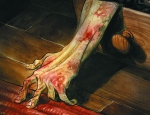

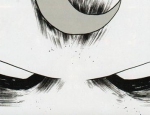
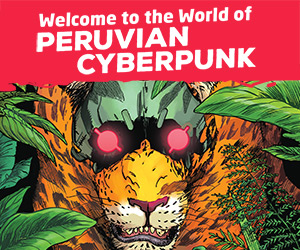

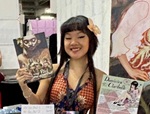
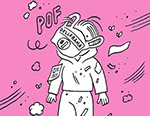
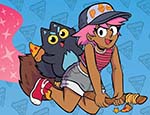
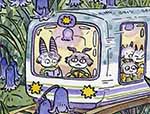
[…] https://www.brokenfrontier.com/the-grit-and-punk-in-darick-robertsons-career/ […]